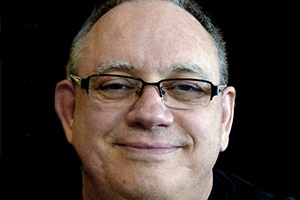
‘An Exorcist Explains the Demonic’
Author: Fr. Gabriele Amorth
Publisher: Sophia Institute
Length: 145 pages
Release Date: Oct. 20, 2016
Website: SophiaInstitute.com
Available at: Kino Library
Christmas is upon us once again and we drift from the embrace of day-to-day living to the morass of consumerism and the occasional religious expression. After all, Christ is revealed upon the world and stories of Christmas ghosts, spirits of revelry, and visions of sugar plums dance in our heads.
It may seem counter-intuitive, thus, to review a book entitled, “An Exorcist Explains the Demonic,” by the recently deceased Fr. Gabriele Amorth.
Fr. Amorth’s subject is the demonic, and his approach is abjectly shocking to the western mind filled with “Harry Potter,” “Sabrina, the Teenage Witch” and the non-stop myriad of movies, television shows and books that portray the paranormal as something wholly interesting. Fr. Amorth was a Vatican exorcist and his tone is matter-of-fact but deadly serious.
Fr. Amorth begins with the basics — Jesus was sent into the world and we celebrate it on Christmas Day. Second, he heralds the Victory of the Cross, which has given us three victories: over death, over decay and over the closed doors of Paradise. He wants to make clear — something we simply don’t think much about — God is real. Lucifer is real. Angels are real. And, as the spawn of Lucifer, demons are real and their intentions are truly to bring us to the Dark Side.

We must ask the question in this poignantly raw and traumatic reality — can the Devil read our thoughts? God is the only omniscient being of such power but Fr. Amorth is quick to point out that the Devil is a good reader of behavior; behavior that each of us is responsible for. Fr. Amorth wants us to acknowledge the cult of Satan, to know that it exists and that we always run the risk of falling into it. If we think ourselves too good, the sin of pride has already begun to march us down that road. The Black Mass is a profane blasphemy of the Eucharistic celebration calling upon all attendees to consecrate themselves to Satan. For this, those attendees may be given power, fame, riches, all the while always held in bondage at the prospect of everlasting torment. None of this is good, but once again, all of it is real.
Fr. Amorth talks about witches, wizards, mediums, seers, and sensitives. Their power is never derived from God so it must come from … well, you know. Many people indulge in these various roles, many as fans or in a recreational sense. What this leads to, Fr. Amorth correctly surmises, is magical thinking: wave a wand, change physical reality. Neither is this power derived from God and our cavalier attitudes about it can lead us to subjugation.
Fr. Amorth goes on to remind us that Satanic intentions are easily portrayed through art, music, writing. Can we believe, for a moment, that a crucifix placed upside down in a jar of urine is really art exalting the Most High? Someone thought it had meaning. It sold for $277,000 back in 1999 at Christie’s in New York. His point is that nothing in art, nothing in culture is simply neutral. As we can use things for good, Satan can use them for evil purposes.
Amid all this milieu of postmodern rejection of our cultural narratives — of which religion is a huge one — we are given this gift by Fr. Amorth: “pull the head out of the sand, folks, the Devil’s come to town.”
And, of course, he talks about demonic possession. So many of us were fascinated by the 1973 movie, “The Exorcist,” and are fascinated with the current running television show of the same name. If someone gets a little on edge, starts twisting the head around, just call the exorcist. But it’s never that easy. Fr. Amorth maintains that all such actions must first be referred to psychiatric professionals and if no relief is found, then call the bishop.
I’m going to be perfectly frank here, this is the first book that actually scared me, and I read “The Exorcist” in one sitting! The reason it did is because if we believe in Jesus and heaven, the opposite is just as real, starkly real and radically real. Still, I absolutely must recommend it, but be prepared for a sizable reality check.






